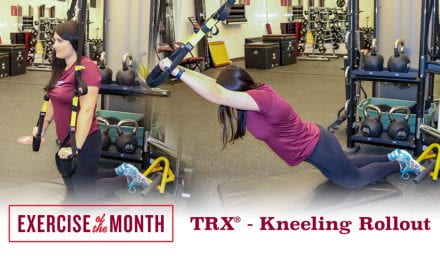This week will be a break from the traditional article to summarize the International Society of Sports Nutrition’s (ISSN) position on diets and body composition as published in the Journal of the International Society of Sports Nutrition. The article looks further at body composition assessment methods, but the scope of this summary will focus solely on the major diet archetypes.
diets and body composition as published in the Journal of the International Society of Sports Nutrition. The article looks further at body composition assessment methods, but the scope of this summary will focus solely on the major diet archetypes.
Background
- The general definition of “diet” is the sum of energy and nutrients obtained from foods and beverages consumed regularly by individuals.
- There are several major diet types interspersed with a multitude of subtypes. The author states this creates conflicting principles that are difficult for the general public and practitioners to navigate. Fad diets across multiple media outlets, with unfounded practices compound the confusion with continued propagation.
- The position assesses the following diets: very-low and low energy diets, low fat diets, low carb diets, ketogenic diets, high protein diets and intermittent fasting.
- The ISSN focus was on prospective intervention trials with a duration of at least four weeks, which is considered a minimum time for meaningful changes in fat mass and lean mass, as well as training effects of exercise training on those variables.
Stand on Major Diet Archetypes
Low energy and Very low energy diets
- Low energy (LED) and very low energy diets (VLED) are characterized by their provision of 800-1,200 kcal/day and 400-800 kcal/day.
- VLED – are typically in liquid form and commercially prepared. The aim is rapid weight loss between 1-2.5 kg/week while trying to preserve lean mass.
- Macronutrient distribution – 70-100 g/day (protein), 15 g/day (fat), 30-80 g/day (carbohydrate).
- Resistance training has been shown to augment the preservation of muscle and even increase it during VLED – at least in untrained/obese subjects (800 kcal/day over 12 weeks with resistance training showed a significant increase in cross sectional area of both slow and fast twitch fibers.
- 8-12 week VLED are common in clinical practice before transitioning to less severe caloric restriction.
- Safety is a concern for VLED. Multiple deaths have been reported due to low quality protein intake, excessive loss of lean mass and inadequate medical supervision.
- Adverse effects of VLED include:
– Cold intolerance
– Fatigue
– Headache
– Dizziness
– Muscle cramps
– Constipation
Low Fat Diet (LFD)
- Defined as providing 20-35% fat. This number is based on the acceptable macronutrient distribution range (AMDR) for adults, set by the Food and Nutrition Board of the Institute of Medicine.
- Long standing recommendations dating back to the 1950s when scientists and physicians promoted decreased fat intake.
- Publications in 1977 and 1980 outlined the dietary guidelines for Americans reinforced the dietary intake of fat with the aim of improving public health. Recommendations followed by major health organizations (American Heart Associations, American Diabetes Association and Academy of Nutrition and Dietetics).
- The premise of dietary fat reduction for weight loss is to target the most energy-dense macronutrient (9g/cal), Protein and Carbs (4g/cal).
Low Carbohydrate Diet (LCD)
- A broad category with no universal agreement on what quantitatively characterizes a low carb diet.
- AMDR is set at 45-65% of total energy intake is appropriate for adults.
- The literature has many definitions here is a list of what has been suggested:
– Dietary intake of less than 45% carbohydrate intake
– LCD with an upper limit of 40% carbohydrate intake
– Less than 200 g of carbohydrate - LFD and LCD have yielded mixed results across a wide range of parameters.
- Practical relevance is questionable for some studies because they deal with obese populations.
- An advantage to LCD over control diets in some studies may be due to a higher protein intake.
Ketogenic Diets (KD)
- A subtype of LCD, defined by its ability to elevate circulating ketone bodies measurably – a state called ketosis.
- Restricted carbohydrate intake to a maximum of ~50g or ~10% of total energy, while keeping protein moderate (1.2 – 1.5 g/kg/d), with the remaining energy intake coming from fat (~60-80% or more depending on degree of protein and carbohydrate (CHO) displacement).
- Researchers have demonstrated that the higher protein content, rather than the lower CHO content, was the crucial factor in promoting greater weight loss.
- Protein is the most satiating of the macronutrients, one researcher demonstrated an intake increase of 15%-30% energy from protein resulted in a spontaneous drop in energy intake by 441/kcal/day leading to a body weight decrease of 4.9 kg in 12 weeks.
- Per the article, all controlled interventions to date that matched protein and energy intake between KD and non-KD conditions have failed to show a fat loss advantage of the KD.
- A growing interest is the effect of KD on athletic performance. Looks to restrict CHO to become adapted to fat oxidation, increasing bodies reliance on fat as fuel.
- Side note: it would be interesting to see further research on the benefit for endurance and strength/power athletes. A ketogenic diet favors the endurance athlete. Fat oxidation is a slower process than the breakdown of CHO. Since endurance athletes are moving for longer durations the increased efficiency and energy density of fat would benefit the endurance athlete more than the strength/power athlete.
High Protein Diets (HPD)
- HPD have various definitions but have generally been defined as having 25% of total energy.
- HPD has also been defined as 1.2-1.6 g/kg, doubling the Recommended Daily Allowance of 0.8 g/kg.
- Of all the macronutrients protein has the highest thermic effect, meaning it is the most metabolically expensive, requires greater effort/energy to burn/store.
Summary
Understanding how various diet types affect body composition is the utmost importance for researchers, practitioners and the general population. There is an abundant amount of research driven information and practice out there. The problem is deciphering the good from the bad. Each method has its strengths and weaknesses. Rather than using a single approach, use the most practical and take the best from each to tailor it to your lifestyle or the individual you are working with.
The common thread that runs through all major diet archetypes for fat mass loss is sustained caloric deficit from baseline. This caloric deficit can be imposed daily/linearly, or non-linearly over the course of the week. As progress is made changes can move from aggressive energy restriction to maintenance. Each archetype has been shown to be effective at improving body composition, while allowing for flexibility in program designs.



